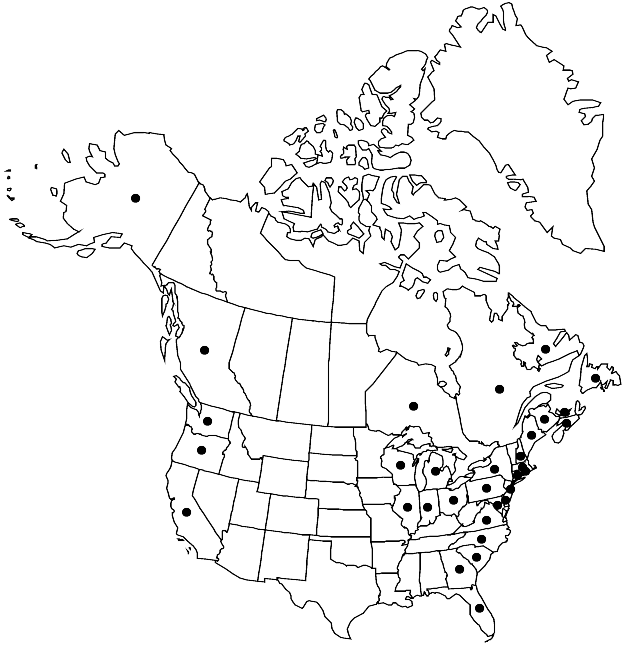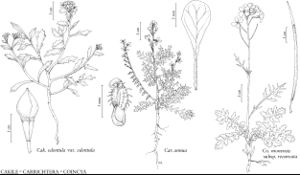Difference between revisions of "Cakile edentula"
Fl. Bor.-Amer. 1: 59. 1830.
FNA>Volume Importer |
FNA>Volume Importer |
(No difference)
| |
Revision as of 20:23, 24 September 2019
Annuals or, rarely, perennials, (compact, rarely sprawling). Stems erect, or, rarely, prostrate, (much-branched), to 8 dm. Cauline leaves: blade ovate to spatulate, or (distal) oblanceolate (less lobed), (smaller distally), margins crenate, dentate, or sinuate (not pinnatifid). Racemes 1–2 dm, (congested); rachis straight. Fruiting pedicels 1.8–8 mm. Flowers: sepals 3.5–5 mm, lateral pair not saccate basally; petals white to pale lavender, (well-developed or reduced to bristles), 4.6–9.7 × 1.5–3 mm, claw not distinct. Fruits (4-angled or 8-ribbed), cylindrical, 12–29 × 3–9 mm; proximal segment terete, (5–10 mm); terminal segment fusiform to turbinate, (7–15 mm), (beak flattened), apex acute, blunt, or retuse. Seeds: cotyledons accumbent to, sometimes, incumbent.
Distribution

North America, introduced in e Asia (Japan), Australia.
Discussion
Subspecies 2 (2 in the flora).
Elements of Cakile edentula are native in North America; the typical variety is introduced on the Pacific Coast and probably on beaches of the Great Lakes Region.
Selected References
None.
Lower Taxa
Key
| 1 | Fruits 4-angled, terminal segment apex usually acute or blunt, rarely retuse. | Cakile edentula subsp. edentula |
| 1 | Fruits 8-ribbed, terminal segment apex blunt or retuse. | Cakile edentula subsp. harperi |
